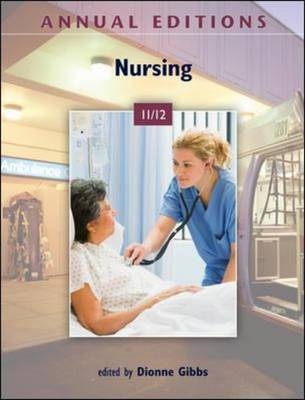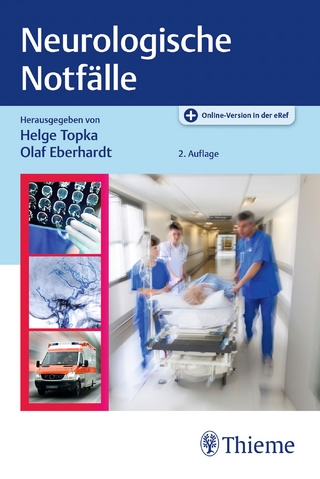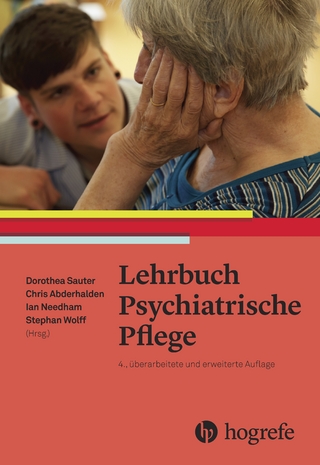
Annual Editions: Nursing 11/12
McGraw-Hill Professional (Verlag)
978-0-07-351559-5 (ISBN)
- Titel ist leider vergriffen;
keine Neuauflage - Artikel merken
Unit: Nursing Past, Present, and Future
Mary Breckinridge, Suzanne Ridgway, Working Nurse, 2005
The Frontier Nursing Service, the precursor of the visiting nurses, founded by Mary Breckinridge, brought health care to the people of Appalachia. Nurses on horseback, were dispatched to remote areas, to provide nursing care for those in need.
Hospitals Were for the Really Sick, Clancy Strock, Reminisce, 2005
Strock reminisces about the days when hospital care was only for people who were severely injured and those with life-threatening illnesses; otherwise, the patient care took place in their home. Today, with all the high-tech equipment and procedures, health-care is going back to that model. Only the sickest patients receive inpatient care. The author questioned why, with all the high-tech equipment and present knowledge, things have not really changed.
Jane Delano, Suzanne Ridgway, Working Nurse, 2005
Approximately 21 years after the American Red-Cross was founded by Clara Barton, Jane Delano was instrumental in establishing a permanent nursing force for that organization.
An End to Angels, Suzanne Gordon and Sioban Nelson, American Journal of Nursing, 2005
This article laments the loss of the traditional image of nursing and espouses the need for a knowledge-based identity. This will carry the profession to a level that is higher, one that will attract younger people to fill the vacant ranks left by the members of the profession, who are aging.
Delores O’Hara, Suzanne Ridgway, Working Nurse, 2005
In 1959 Delores O’Hara, who was a modern day Registered Nurse and Nursing pioneer, became the first nurse that NASA recruited. The space agency only employed one nurse, Dee O’Hara, to provide Nursing care for the original group of seven "space pilots". Today, it takes more than a dozen nurses to provide care for the one hundred astronauts at NASA.
Shots Heard ’Round the World, Michael Doss, The Orange County Register, 2005
Fifty years have passed since the announcement of a safe polio vaccine. This vaccine has led to the virtual eradication of the dreaded polio epidemic. Nurses continue to work with Organizations, around the world, like the World Health Organization (WHO), to immunize children and educate parents, so that they are aware of the need to protect children from childhood illnesses.
Linda Richards, Suzanne Ridgway, Working Nurse, 2005
This is the profile of an important contributor to the field of nursing. This article is about Melinda Richards and her desire for a formal nursing training program. She became the first American trained as a nurse. She was also instrumental in training nurses in this country and many other countries. This brought nursing into the realm of professional caregivers.
Susie Walking Bear Yellowtail, Suzanne Ridgway, Working Nurse, 2004
An ambassador to her people, political activist and health-care giver, Susie Walking Bear Yellowtail was the first Native American Registered Nurse.
Lillian Wald, Suzanne Ridgway, Working Nurse, 2004
Lillian Wald established the Henry Street Settlement on the lower East side of New York City, and it became the foundation of the Visiting Nurse Society. The New York VNA continues to thrive today, as do agencies throughout the country.
Unit: Legal and Ethical Issues
The Ethical, Legal and Social Context of Harm Reduction, Bernadette Pauley, et al., Canadian Nurse, 2007
This article focuses on the ethical, legal, and social context of harm reduction, which is essential when promoting ethical practices and education on illicit drug use, harm reduction, and health promotion. It is essential to promote health and well-being so that individuals can obtain their own optimal health, as it relates to their situation.
Dialysis: Prolonging Life or Prolonging Dying? Ethical, Legal and Professional Considerations for End of Life Decision Making, Y. White and G. Fitzpatrick, Journal of Renal Care, 2006
The view of a patient who makes the decision to discontinue dialysis treatment should be taken into account during the decision making process. It is important that healthcare providers are able to differentiate their own beliefs from the patient’s end-of-life decision and work collaboratively with their patient to ensure that they achieve quality of life.
Being a Research Participant: The Nurse’s Ethical and Legal Rights, Pauline Griffiths, British Journal of Nursing, 2006
Healthcare providers and patients have an ethical and legal right to refuse to participate in research. Moreover, there are basic principles that researchers must ensure each participant receives, such as personal autonomy, maintenance of one’s dignity, non-coercion, privacy, confidentiality, non-malfeasance, consent, and informed consent. A primary role of the nurse during research is to advocate for the patient and to protect the patient’s rights.
Exploring Ethical, Legal, and Professional Issues with the Mentally Ill on Death Row, Jessica E. Plichta, Journal of Forensic Nursing, 2008
This article focuses on exploring the ethical, legal, and professional issues with the mentally ill on death row, which can lead to many controversial discussions. A number of the mentally handicapped receive psychiatric treatment so that they will be competent enough to have their sentence carried out. However, what roles, if any, do healthcare professionals play as advocates for these individuals?
Covert Medication in Older Adults Who Lack Decision-Making Capacity, Frances Tweddle, British Journal of Nursing, 2009
Every competent adult has the legal right to refuse medical treatment. However, do older adults with diminishing mental capacities, caused by diseases such as dementia, possess the same legal right to receive and refuse medical treatment? The nurse plays a vital role in ensuring all patients’ receive respect, as they exhibit their right to refuse. One vital role of the nurse is to act beneficently as she/he advocates for the patient’s right.
Unit: Drugs, Medications, and Alternative Therapies
Arresting Drug-Resistant Organisms, Rebecca Kjonegaard and Frank Edward Myers III, Nursing, 2005
Hospital-acquired resistant bacteria have now moved out into the community. This article expresses concerns and discusses the threat along with how the nurse can protect his/her patients from exposure to these organisms.
Reduce the Risk of High-Alert Drugs, Hedy Cohen, Nursing, 2007
This article concentrates on high alert drugs such as anticoagulants, sedatives, opioids and insulin. The author indicates that these drugs require close monitoring during and after administration. It is crucial that processes are in place to monitor these drugs. Furthermore, in order to reduce fatal errors, nurses must be aware of these and other high alert medication and the potential effect that they may have on their patients. Additionally, recognizing and implementing procedures and highlighting drugs that look and sound alike can prevent confusion that may lead to fatal errors.
Keeping Your Patient Hemo-Dynamically Stable, Julie Miller, Nursing, 2007
This author discusses high alert medication that nurses should consider and how to effectively manage the care of patients who are dynamically stable. Possessing the knowledge of your facilities criteria when monitoring patients who are receiving vasoactive medications, can decrease dosing errors and patient harm.
Medication-Monitoring Lawsuit: Case Study and Lessons Learned: Another Real-Life Case in Nursing Home Litigation, Linda Williams, Nursing Homes Magazine, 2003
Ineffective medication monitoring systems can lead to patient fatalities and drawn out lawsuits. It is imperative that nurses educate themselves on their facility policies, recognize medication contraindications, and always be aware of high alert medications.
Antiemetic Drugs, Lisa Cranwell-Bruce, MedSurg Nursing, 2009
Nausea and vomiting may be triggered by many factors such as surgery (post operatively), chemotherapy and radiation. Nausea and Vomiting may also have a tremendous impact on a patient’s nutritional status. Antiemetic drug, administered to patients who are suffering from nausea and vomiting, often brings relief.
Unit 4: Disease and Disease Treatments
Assessment and Management of Patients with Wound-Related Pain, Andy Roden and Elaine Sturman, Nursing Standard, 2009
Pain is a personal experience that is subjective and can be very real to each individual who is experiencing it. Pain, is often described as acute or chronic. Wound related pain can be defined as nociceptive and neuropathic, and the cause of these types of pains can vary. The nurse plays a vital role in assessing the patient with wound related pain and ensuring that, during this critical period, pharmacological treatment is administered.
Acute Abdomen: What a Pain! Susan Simmons Holcomb, Nursing, 2008
Abdominal pain can manifest itself with a variety of symptoms. The effects of abdominal pain may vary in its intensity, location, and duration. Assessment of the patient’s symptoms will assist in ensuring proper diagnosis and treatment for the patient.
Pain Management: The role of the Nurse, Faustina Oware-Gyekye, Wes
t Africa Journal of Nursing, 2008
This article describes pain as a universal experience, and one of the most frequent reasons people seek healthcare. The nurse plays a vital and unique role as he or she assesses plans, implement, manages, educates and advocates for a patient’s pain management.
Anxiety and Open Heart Surgery, Joy Viars, MEDSURG Nursing, 2009
Patients often experience anxiety with the fear of the unknown. Patients who have to endure open-heart surgery often experience physical symptoms, such as, chest pain, palpitation, shortness of breath, and dizziness. Pharmacological treatment for anxiety may differ. The nurse plays an important role to ensure that the patient received education on the procedures and that they have answers for their questions. This will help to alleviate the patient’s anxiety and allow for proper recuperations.
Respiratory Assessment in Adults, Tina Moore, Nursing Standard, 2007
Proper respiratory assessment is essential to identify malfunctions of the respiratory system. The nurse’s assessment of the respiratory system is essential in order to recognize advantageous breath sounds and detect symptoms of poor perfusion that may lead to respiratory failure. The assessment process of the respiratory system includes careful observation of the respiratory rate, rhythm, patients color, and the amount of effort exerted at rest and during activity.
Medical Nutrition Therapy: A Key to Diabetes Management and Prevention, Sara F. Morris and Judith Wylie-Rosett, Clinical Diabetes, 2010
This article focuses on the fact that there is a direct correlation between diabetes and diet management. The American Diet Association (ADA) 2009 clinical practice recommendation states that individuals who have pre-diabetes or diabetes should receive individualized Medical Nutritional Therapy to improve treatment goal, preferably, by a registered dietitian who is familiar with the components of diabetes.
Understanding Hypovolaemic, Cardiogenic and Septic Shock, Sharon Garreston and Shelly Malberti, Nursing Standard, 2007
This article describes shock as a complex physiological syndrome. It also discusses the three most common types of shock, and how to identify this group of patients and the clinical manifestations associated with shock. Also discussed are the nurse’s role and treatment modalities of shock.
Tracheostomy: Facilitating Successful Discharge from Hospital to Home, Ben Bowers and Claire Scase, British Journal of Nursing, 2007
This article discusses the complexity of care associated with patients who have long-term tracheotomy. This group of patients may require additional support and education about tracheotomy care prior to the discharge process and continued education when they are at home. It is essential that there is proper communication between the hospital and the visiting nurse for the continued care. This would also ensure the safe management of the tracheotomy in the home environment.
Are You Ready to Care for a Patient with an Insulin Pump? David K. Miller, Nursing, 2009
This article focuses on how to care for a patient who is hospitalized and receiving insulin by way of an insulin pump. It is important to assess the patient and their ability to manage this device. The nurse plays a vital role in ensuring that the patient gets proper education in the use of this device.
Head Attack, Michael Feld and Johann Caspar Rüegg, Scientific American Mind, 2005
The author of this article asks the question "Is your mental stress putting you at greater risk for a heart attack?" The article discusses what happens to the body when stress is present.
Unit: Nursing Practice Areas/Specialties
Pediatric Hospice: Butterflies, Christine Contillo, Working Nurse, 2005
Pediatric hospice nurses have the opportunity to provide home care services, pain control, family support, and education. Although this area is not easy to practice, it can be rewarding. The nurses that provide end-of-life care are highly trained specialists.
Doing More with Less: Public Health Nurses Serve Their Communities, Cathryn Domrose, Nurseweek, 2005
Public Health Nurses provide needed care for patients, many of them with debilitating conditions. Health departments, due to budget cuts and a shortage of nurses, have eliminated many nursing positions. The future of the public health nurse lies with the lawmakers—the crisis will increase, as many PHNs are nearing retirement.
A New Way to Treat the World, Isadore Rosenfeld, Parade, 2005
The U.S. Navy Ship Mercy, a seaworthy hospital, can accommodate 1000 patients. More than 3000 doctors and nurses joined their naval colleagues on a ship that toured many nations around the world, providing health care to the needy. The ship has toured the world since the end of the Gulf War, in 1991, offering health care to devastated parts of the world. It also gives nurses the opportunity to bring hope to other nations.
Emergency Preparedness, Christine Contillo, Working Nurse, 2005
This article discusses the changes in the duties and responsibilities of nurses in the Public Health field. Over the years, the nurse and other public health personnel have done an excellent job to improve the health status in this country. Nurses must use their already developed skills to deal with new problems and to prepare for emergencies, in this post 9/11 world.
A Nursing Career to Consider: Assisted Living, Christine Contillo, Working Nurse, 2005
Assisted-living facilities present an interesting employment alternative for nurses. This article describes their duties and responsibilities, and presents some thought provoking information for those considering this venue to practice their nursing skills.
Unit: Nutrition and Weight Management
Fetal Nutrition and Adult Hypertension, Diabetes, Obesity, and Coronary Artery Disease, Joan Nalani Thompson, Neonatal Network, 2007
This article discusses the Fetal Origins Hypothesis and the correlation between in utero programming and a malnourished fetus. Malnutrition that occurs at this stage may predispose infants to low birth weight and increase the occurrence of heart disease such as hypertension, diabetes, and coronary heart disease, in the adult years.
Nutrition through the Life-Span. Part 1: Preconception, Pregnancy and Infancy, Alison Anne Shepherd, British Journal of Nursing, 2008
This article indicates that nutrition throughout the lifespan is essential in helping to promote proper growth into healthy adults. The general guidelines for eating healthy during pregnancy is discussed along with the importance of healthy eating during infancy in order to ensure proper development into healthy children and adults. The nurse’s role includes recognizing malnutrion and working collaboratively with the interdisciplinary team.
Nutrition in Palliative Care, Sue Acreman, British Journal of Community Nursing, 2009
This author focuses on nutritional care at the end of life, which is just as essential as nutritional care at the beginning of life. One of the many goals discussed here, is how to improve quality of life. Although nutritional needs differ, it is important to assess the physiological needs and one’s ability to tolerate oral nutrition during palliative care.
Nutrition in the Elderly: A Basic Standard of Care and Dignity for Older People, Iqbal Singh, et al., British Journal of Hospital Medicine, 2010
This article indicates that malnutrition in the elderly often goes undetected and undiagnosed. The ability to identify malnutrition in the elderly will help to decrease the recovery period from illness to wellness. A collaborative effort between appropriate agencies is necessary to decrease the risk of malnutrition in this growing population.
Nutrition Management of Gastric Bypass in Patients with Chronic Kidney Disease, Rachael R. Majorowicz, Nephrology Nursing Journal, 2010
This article focuses on nutritional management in the post-gastric bypass patient with chronic kidney disease. Gastric bypass patients are at risk for increased nutritional complications and require close monitoring of their nutritional intake by a dietitian to decrease the likelihood of post-surgical nutritional complication.
Unit: Men in Nursing
Men in Nursing Today, Erika Icon, Working Nurse, 2005
Erika Icon answers many questions concerning men in nursing. The numbers of men in the ranks are increasing with a reported 13 percent of nursing students today being male. The changes in gender roles of the last 30 years are beginning to affect the male’s role in the nursing profession.
Men in Nursing: Addressing the Nursing Workforce Shortage and Our History, Jennifer Bonair and Nayna Philpsen, The Maryland Nurse News and Journal, 2009
This article discusses the shortage of qualified Registered Nurses and the history of men’s evolution into nursing practice. Male nurses now practice in specialty areas such as the ICU, and the ER. The promotion of diversity in nursing is encouraged as we support and recognize men as nurses and eliminate the term "male nurse" when referring to men who practice nursing.
The Male Community Nurse, Alison Blackman, Primary Health Care, 2009
This article focuses on the role of the male nurse in community nursing. The aut
hor indicates that nursing was a male-dominated profession prior to the 19th century. Men were often appointed to work in areas of the community that were deemed too dangerous for female nurses to visit.
The State of the Profession: "Code White: Nurse Needed", The State, 2005
This article suggests that attracting more men to the field of nursing can make a significant contribution toward solving the nursing shortage. The article goes on to discuss how important, an image change to the profession it will be, if more men are attracted to the ranks.
Unit 8: Nursing Education
An Evaluation of Simulated Clinical Practice for Adult Branch Students, Prescott S, Garside J, Nursing Standards, 2009
The author of this article describes an evaluation of simulation in nursing education by utilizing adult students. The evaluation indicates that simulation will never replace the practical experience obtained in the clinical site; however, it assisted learners to develop confidence and the ability of the students to link theoretical learning to clinical practice.
Nursing Students’ Self-Assessment of their Simulation Experiences, Marhy L. Cato, Kathie Lasater, and Alycia Isabella Peeples, Nursing Education Perspectives, 2009
This article reflects on a self-assessment of nursing students and nursing faculty during a simulation experience. Self-reflection and journaling tend to have a positive impact on students and their learning experience. The utilization of a Clinical Judgment Rubric helps students to organize their thoughts about managing various simulation experiences.
Mentoring as a Teaching-Learning Strategy in Nursing, Marguerte Riley and Arleen D. Fearing. MedSURG Nursing, 2009
This article focuses on a practicum experience in which nurse educators mentor nursing students to enhance the teaching-learning process and to assess students’ complex learning needs. This evaluation helps to develop students’ practice at various levels of the clinical setting.
NCLEX Fairness and Sensitivity Review, Anne Wendt, Lorraine Kenny, and Michelle Riley, Nurse Educator, 2009
In order to practice as a nurse, every student who graduates from a nursing program must take and pass the National Council Licensure Examination (NCLEX). This article focuses on the fairness and sensitivity review of the NCLEX examination. This review ensures that stereotyping on the NCLEX does not occur and that language, symbols, words, phrases, or examples that are sexist, racist, potentially offensive, inappropriate, or negative toward any group, are avoided.
How to Read and Really Use an Item Analysis, Thayer W. McGahee and Julia Ball, Nurse Educator, 2009
One of the goals of nurse educator is to ensure that nurse graduates are prepared and pass the National Council Licensure Examination (NCLEX), in the first attempt. The author of this article reviews item analysis and how to measure central tendencies. The ability of faculty to understand "an item analysis” and how to utilize the components when revising tests can help to decrease the frustration many faculty members often experience.
Unit: The Profession and Professionalism
Nurses Step to the Front, Samantha Levine and Angie C. Marek, U.S. News & World Report, 2005
As the field of health care and nursing changes, it is the expectation that nurses take on a bigger and more involved role. The article discusses the patient reactions, the new skills necessary for nurses taking on these expanded roles, and the effect the nurse shortage will have on these changes.
Mitigating the Impact of Hospital Restructuring on Nurses: The Responsibility of Emotionally Intelligent Leadership, Greta Cummings, Leslie Hayduk, and Carole Estabrooks, Nursing Research, 2005
This article discusses the responsibility of emotionally intelligent leadership, in the context of hospital restructuring and the impact that it has on the nurse as well as the outcome of patient care.
Predictors of Professional Nursing Practice Behaviors in Hospital Settings, Milisa Manojlovich, Nursing Research, 2005
This article presents Milisa Manojlovich’s research on the behavior of professional nurses in the hospital setting. It discusses how self-efficacy contributes to professional practice behavior.
The Winning Job Interview: Do Your Homework, Belinda E. Puetz, American Journal of Nursing Career Guide, 2005
Belinda Puetz presents four important considerations when interviewing for a nursing position. These guidelines are equally as useful for the new graduate seeking his or her first job, a nurse returning to the workforce, or an individual ready for a change.
Meeting the Challenges of Stress in Healthcare, Dan Johnston, Similar to an article that appeared in: Advance for Nurses, 2005
When the words stress, burnout, and depression, in the context of health care, are used, the reader might think that a patient was the subject of the article. In this case, Dan Johnston describes the emotional and psychological issues facing nurses today and provides suggestions for bouncing back from the difficulties.
Unit: Culture and Cultural Care
Ethics and Advance Care Planning in a Culturally Diverse Society, Megan-Jane Johnstone, and Olga Kanitsaki, Journal of Transcultural Nursing, 2009
An individual’s culture has an incredible impact in the birthing process, life’s cycle, and death and dying. This article focuses on cross-cultural impact of end of life planning relating to cultural consideration in advance care planning and advance directives, cultural differences in End-of-Life decision, decision making, disclosure and truth telling and control over dying.
Jewish Laws, Customs, and Practice in Labor, Delivery, and Postpartum Care, Anita Nobel, et al., Journal of Transcultural Nursing, 2009
The authors discuss the practices of Jewish laws, customs, and practices in labor, delivery, and postpartum care. Cultural knowledge is necessary in order to respect and provide competent cultural care. Reviews of customs, such as prayer, communication, dietary law, modesty issues, and the Sabbath are included in this discussion.
Understanding Transcultural Nursing, Nursing Career Directory, 2005
As many areas of this country become culturally diverse, the delivery of nursing care must change to accommodate the new patient mix. This article discusses the behaviors that the nurses must understand and work with in order to provide proficient care keeping the culture in mind.
| Erscheint lt. Verlag | 16.2.2011 |
|---|---|
| Zusatzinfo | 10 Illustrations, unspecified |
| Sprache | englisch |
| Maße | 208 x 274 mm |
| Gewicht | 465 g |
| Themenwelt | Schulbuch / Wörterbuch ► Lexikon / Chroniken |
| Pflege ► Fachpflege ► Neurologie / Psychiatrie | |
| Medizin / Pharmazie ► Pflege ► Pflegemanagement / Qualität / Recht | |
| Naturwissenschaften ► Biologie ► Mikrobiologie / Immunologie | |
| ISBN-10 | 0-07-351559-0 / 0073515590 |
| ISBN-13 | 978-0-07-351559-5 / 9780073515595 |
| Zustand | Neuware |
| Haben Sie eine Frage zum Produkt? |
aus dem Bereich


